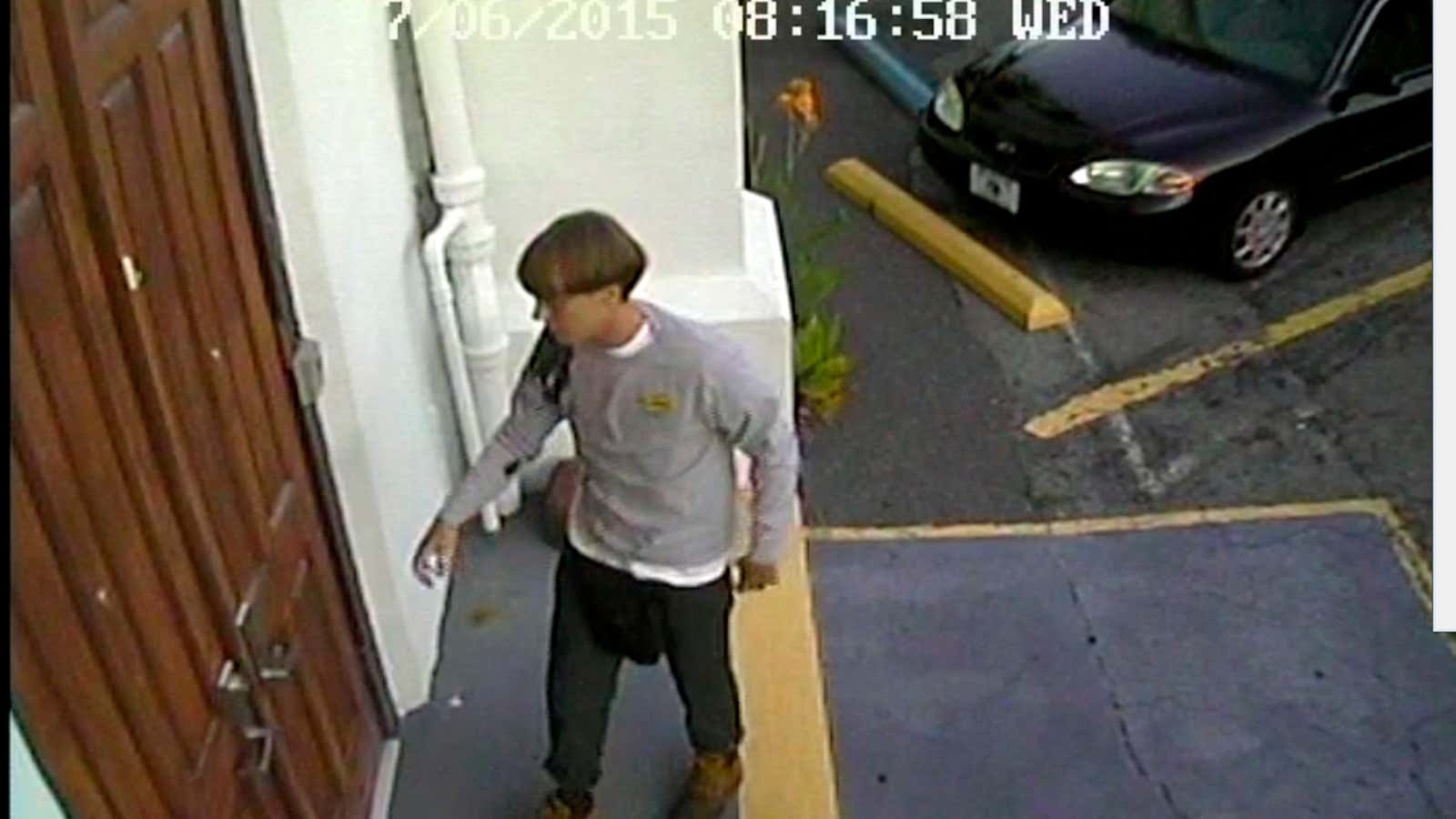At around 9pm on Wednesday, June 17, a young white male in a grey hoodie who police have now identified as Dylann Storm Roof, 21, opened fire on a prayer meeting in the Emanuel AME Church, killing nine black congregants. These innocent men and women were slaughtered in slave rebellion hero Denmark Vesey‘s church, one of the largest and oldest black congregations south of Baltimore. In the midst of a week of endless media “takes” on Rachel Dolezal, this hate crime, this act of racially-motivated terrorism (and make no mistake—this is domestic terrorism) highlights the real “conversation” Americans, especially white Americans, should be having about race. Instead of making tortured comparisons between racial and gender identity, we should be asking why more than 50 years after the Sixteenth Street Baptist Church bombing in Birmingham, Alabama, do white people continue to terrorize blacks?
And why haven’t we been able to stop it?
Earlier this week, women of color watched as black womanhood was bastardized by Rachel Dolezal, a woman who will never have to worry about being the victim of white supremacy. A woman, in fact, who is perhaps the ultimate symbol of white privilege—why else has the mainstream media devoted so much attention to her particular interpretation of what it means to be black in America?
Last night’s massacre is a reminder—a horrible, soul-shaking reminder—that being black in America has little to do with your hairstyle or your skin tone. Being black in America means to have death be so associated with your race that every time a hashtag circulates, you fear that another extension of yourself has died.
In the days to come, we will see news pundits question whether the shooter in South Carolina was perhaps suffering from a mental illness, as if that makes his actions less bigoted. We may even have people attempt to justify the crime—in the immediate aftermath, as family and friends reeled with grief, someone called in a bomb threat forcing an evacuation of the crime scene.
Let us be clear: This was a hate crime, exacted upon a community that has been fighting for the will to live freely in this country for over 400 years. This was domestic terrorism, designed to inflict fear and suffering and pain. Any conversation about race in America need to be centered around this fundamental truth, not on imposters and their pseudo-philosophical views on identity. Because for every woman in (almost) literal blackface, there are dozens—hundreds—of actual black bodies piling up across the country.
We can no longer coddle white people to this fact. We can no longer attempt to soften the truth with coded language and innuendo. “Struggle,” as defined by Rachel Dolezal, is a buzzword, a cloak of victimhood used to distract and obfuscate. In fact, struggle is absorbed. It is experienced. It cannot be simply uttered; it must be lived.
So no more about Rachel Dolezal. No more conversations about “transracialism.” No more. Talk about the victims at Emanuel AME Church. Talk about why they were killed. If that makes you uncomfortable, good. We could use a bit of brutal honesty when it comes to race in America. Because black people woke up this morning remembering, again, that they are not safe on their own streets, in their own places of worship. And that is the conversation on race we actually should be having. The time is now.
